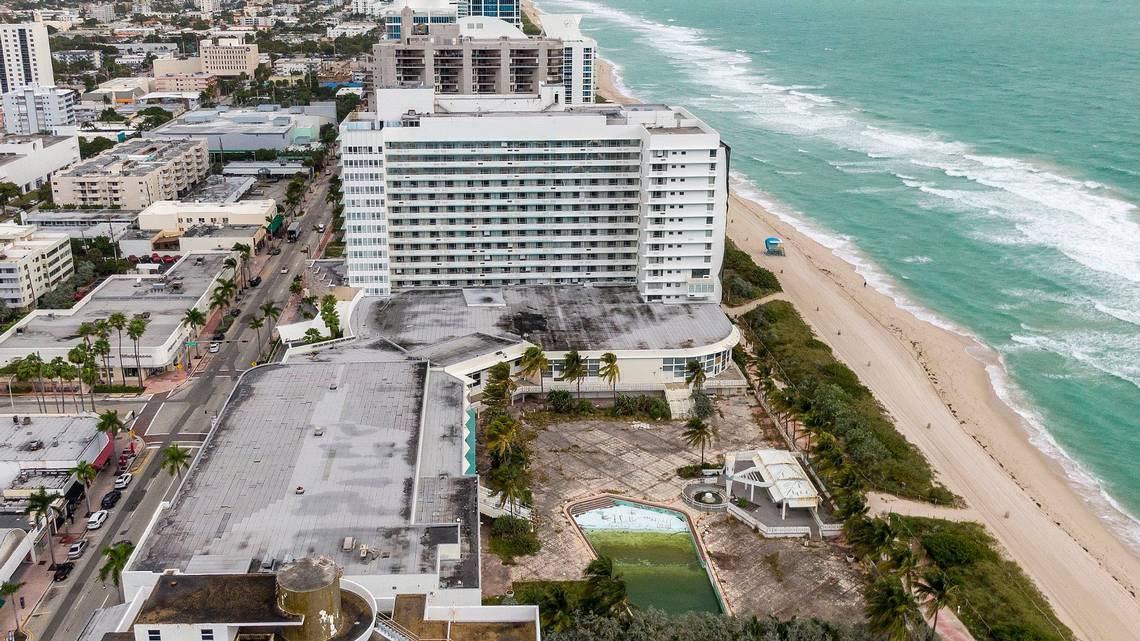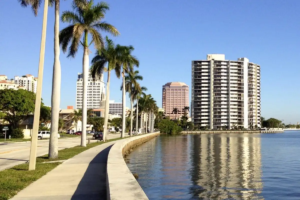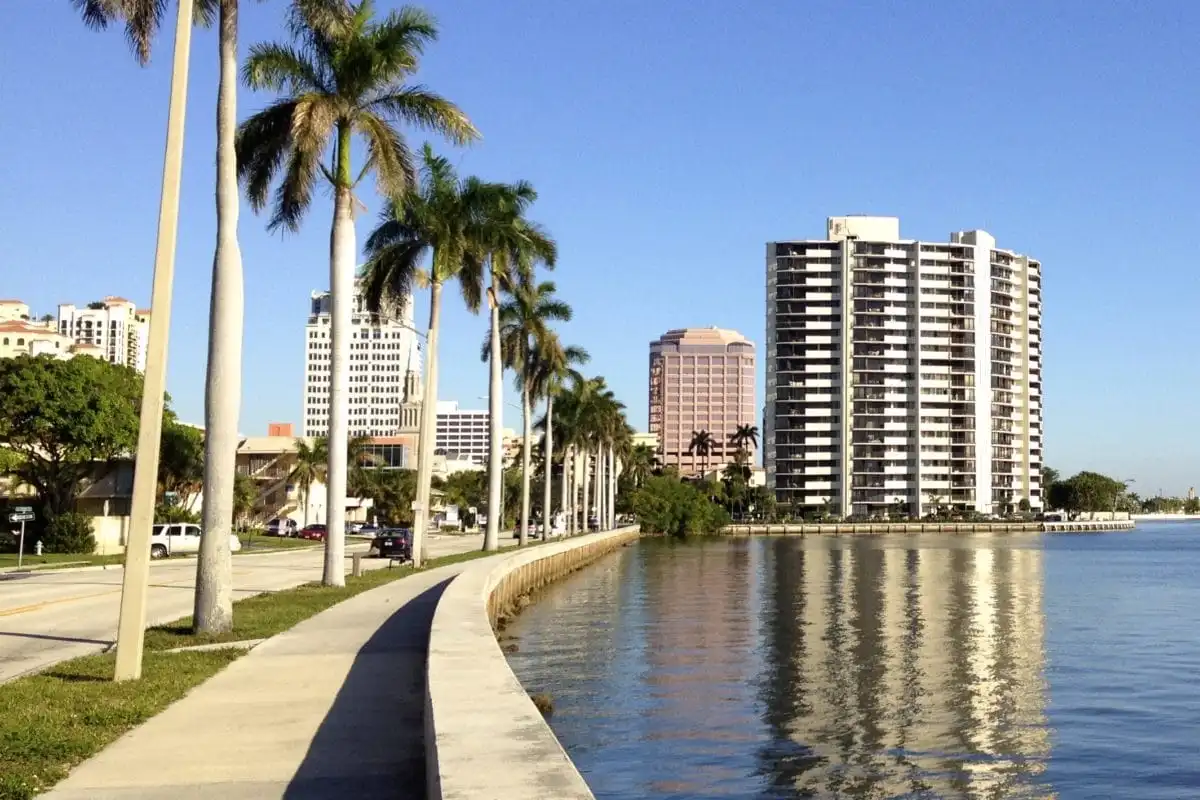Historic Miami Beach Architecture at Risk: Live Local Act Amendment Threatens Iconic Buildings
Florida Senate Bill Threatens Miami Beach's Architectural Heritage
The iconic skyline of Miami Beach—celebrated worldwide for its distinctive Art Deco, Miami Modern (MiMo), and Mediterranean Revival buildings—faces an unprecedented threat. City officials have raised urgent concerns about a Florida Senate bill amending the Live Local Act that could potentially enable developers to demolish irreplaceable historic buildings designed by renowned architects like Morris Lapidus, Lawrence Murray Dixon, and Henry Hohauser.
"This legislation creates an existential crisis for Miami Beach's identity," warned Mayor Steven Meiner. "Once we lose our historic fabric, we won't get it back. We must protect what makes Miami Beach iconic—and that starts with saving our historic districts."
The alarming situation prompted city commissioners and cultural stakeholders to gather at the historic Cardozo Hotel on Ocean Drive, owned by Grammy-winning music producer Emilio Estefan, who expressed grave concerns about the potential loss of architectural heritage.
"Miami Beach's Art Deco architecture tells the story of who we are," Estefan emphasized. "Our Art Deco buildings, like the Cardozo, define Miami Beach and set us apart from every other city in the world. These aren't just buildings—they're the physical embodiment of our cultural identity."
House vs. Senate: A Critical Difference in Historic Preservation
A troubling discrepancy exists between companion bills in the Florida Legislature. While the House version includes provisions protecting more than 2,600 historic structures in Miami Beach, the Senate version—sponsored by Senator Alexis Calatayud, whose district paradoxically includes portions of Miami Beach—conspicuously omits these vital protections.
According to city representatives, if the Senate's version prevails without amendments, local authorities would be powerless to prevent developers from transforming low-rise historic properties into high-density developments, effectively erasing decades of meticulous historic preservation efforts that have made Miami Beach a global architectural destination.
Multiple attempts to reach Senator Calatayud's office for clarification on this omission went unanswered, raising further concerns among preservation advocates about the bill's intent and potential consequences.
Understanding the Live Local Act and Its Implications
The Live Local Act, implemented nearly two years ago, was designed to address Florida's affordable housing crisis by offering developers substantial incentives. These include increased density allowances, height relaxations, parking requirement reductions, tax rebates, and other benefits for mixed-use projects that designate 40 percent of residential units for individuals earning up to 120 percent of the area median income (AMI)—currently $79,400 in Miami-Dade County.
Critically, the legislation mandates that local governments must administratively approve compliant projects, effectively bypassing traditional public hearings and established municipal zoning regulations. This streamlined process has already accelerated development across South Florida, with numerous Live Local Act projects breaking ground.
The Senate's proposed amendment would significantly expand these powers, allowing developers to demolish and redevelop properties in commercially zoned districts without requiring local approval. In Miami Beach, this would place hundreds of architecturally significant two-story and three-story buildings constructed before the 1970s at imminent risk of demolition to make way for high-rise developments.
The Cultural and Economic Value of Miami Beach's Architecture
Miami Beach's architectural heritage isn't merely of aesthetic or historical importance—it represents a major economic engine that drives tourism and defines the city's brand identity worldwide. The Art Deco Historic District alone attracts millions of visitors annually, contributing substantially to local businesses and tax revenues.
A 2023 economic impact study conducted by the Miami Design Preservation League found that architectural tourism generates approximately $2.2 billion annually for the local economy, supporting over 15,000 jobs directly and indirectly. The study further indicated that 72% of international visitors cited the historic architecture as a primary reason for choosing Miami Beach as their destination.
Daniel Ciraldo, Executive Director of the Miami Design Preservation League, notes: "The irony is that in attempting to address housing affordability, this legislation could undermine the very economic foundation that makes Miami Beach prosperous. Our historic buildings aren't obstacles to progress—they're essential assets that distinguish us in an increasingly homogenized urban landscape."
Community Response and Mobilization Efforts
The threat to Miami Beach's architectural heritage has galvanized unprecedented cooperation among typically disparate stakeholders. Preservation organizations, hospitality industry leaders, resident associations, and city officials have formed a unified coalition to advocate for amendments to the Senate bill.
The "Save Miami Beach Architecture" campaign has gathered over 25,000 signatures on a petition urging lawmakers to adopt the House bill's preservation protections. Social media campaigns have generated millions of impressions, with celebrities and influencers highlighting the global significance of Miami Beach's architectural legacy.
Christine Florez, president of the Miami Beach United neighborhood association, emphasized the rare unanimity: "In my 20 years of community advocacy, I've never seen such comprehensive agreement across all sectors of Miami Beach society. This transcends politics—it's about preserving our community's soul."
Insights: Understanding the Battle for Miami Beach's Architectural Future
Why are Art Deco and MiMo buildings so important to Miami Beach's identity?
Miami Beach contains the world's largest concentration of Art Deco architecture, with over 800 preserved buildings mostly constructed between 1923 and 1943. These structures, along with the Miami Modern (MiMo) buildings from the 1950s and 60s, create a unique architectural landscape that has defined Miami Beach's visual identity in films, television, photography, and popular culture globally. Unlike other historic districts that might preserve singular architectural styles, Miami Beach's districts showcase the evolution of 20th-century design movements in a concentrated urban setting.
Wouldn't new development create more housing and benefit the economy?
While development certainly creates temporary construction jobs and potentially increases housing stock, it often comes at the expense of affordability and character. Studies show that demolishing historic buildings to construct luxury high-rises typically results in higher-priced units that do little to address genuine affordability concerns. Furthermore, the economic benefits of architectural tourism ($2.2 billion annually) far outweigh the short-term gains from redevelopment. Many cities that have sacrificed historic buildings for modern development have experienced "architectural amnesia," losing their distinctive character and subsequently, their competitive edge in tourism.
Is it possible to balance historic preservation with addressing housing needs?
Absolutely. Many cities have successfully integrated affordable housing initiatives within historic preservation frameworks. Adaptive reuse of historic buildings, development of non-historic parcels, and thoughtful additions to existing structures all offer viable alternatives that maintain architectural heritage while expanding housing options. The challenge isn't preservation versus development—it's ensuring that development occurs in harmony with the existing architectural fabric that gives Miami Beach its exceptional value.
How would the loss of historic buildings affect Miami Beach's climate resilience?
Interestingly, many of Miami Beach's historic buildings incorporate natural climate adaptation features that preceded modern air conditioning, such as cross-ventilation, shaded overhangs, and strategic orientation. Preserving and retrofitting these buildings often produces less carbon impact than demolition and new construction. Additionally, the human-scale of historic districts promotes walkability and reduces car dependency, aligning with contemporary sustainability goals.
What happens next in this legislative battle?
The Florida Legislature must reconcile the differences between the House and Senate versions before final passage. Miami Beach officials are specifically lobbying for the Senate to adopt the House bill's historic preservation protections. If unsuccessful, the city is exploring legal challenges based on potential violations of existing historic preservation statutes and property rights concerns. The outcome will likely set precedents for how Florida balances development incentives with cultural heritage protection statewide.
As Miami Beach faces this pivotal moment in its architectural history, the fundamental question extends beyond buildings to identity itself: Can a place remain authentic when the physical elements that define its character are systematically replaced? For now, Miami Beach's officials, cultural leaders, and residents continue their urgent campaign to ensure their city's architectural soul remains intact for future generations.













